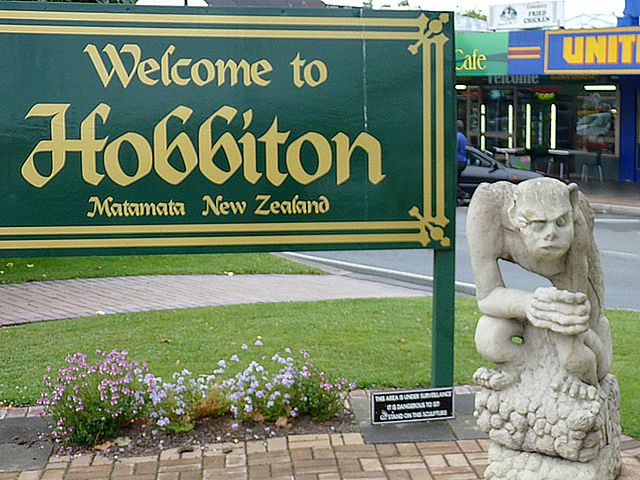Tolkien and antiquarianism
J. R. R. Tolkien included many elements in his Middle-earth writings, especially The Lord of the Rings, other than narrative text. These include artwork, calligraphy, chronologies, family trees, heraldry, languages, maps, poetry, proverbs, scripts, glossaries, prologues, and annotations. Scholars have stated that the use of these elements places Tolkien in the tradition of English antiquarianism.
Tolkien intended to include many antiquarian-style elements in The Lord of the Rings, including drawings and paintings. This illustration, of the Doors of Durin, was, despite his best efforts, the only one that the publishers included in the first edition.
The first page from The Book of Mazarbul, a facsimile artefact that Tolkien carefully created in the style of a forgery to support the story and bring readers into his fantasy; he had hoped to include it in the first edition of The Lord of the Rings.
The Lord of the Rings is an epic high fantasy novel by the English author and scholar J. R. R. Tolkien. Set in Middle-earth, the story began as a sequel to Tolkien's 1937 children's book The Hobbit, but eventually developed into a much larger work. Written in stages between 1937 and 1949, The Lord of the Rings is one of the best-selling books ever written, with over 150 million copies sold.
Beowulf's eotenas [ond] ylfe [ond] orcneas, "ogres [and] elves [and] devil-corpses" helped to inspire Tolkien to create the Orcs and Elves of Middle-earth.
Barbara Remington's cover illustrations for the Ballantine paperback version "achieved mass-cult status" on American college campuses in the 1960s. They were parodied by Michael K. Frith's cover design for the 1969 Bored of the Rings.
"Welcome to Hobbiton" sign in Matamata, New Zealand, where Peter Jackson's film version was shot



![Beowulf's eotenas [ond] ylfe [ond] orcneas, "ogres [and] elves [and] devil-corpses" helped to inspire Tolkien to create the Orcs and Elves of Middle-e](https://upload.wikimedia.org/wikipedia/commons/thumb/c/cd/Beowulf_eotenas_ylfe_orcneas.jpg/640px-Beowulf_eotenas_ylfe_orcneas.jpg)

